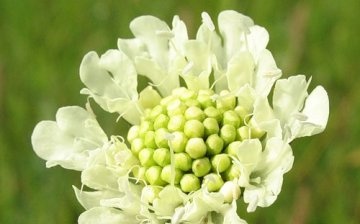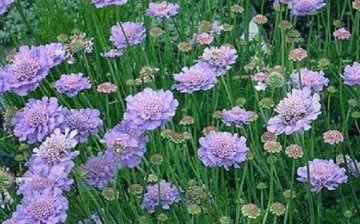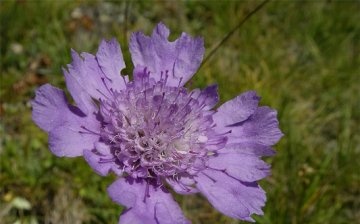Scabiosa in the photo
Small multi-colored and fluffy balls - this is what scabiosa looks like in the photo. This gentle and modest plant has erect, rather strong branched or simple stems, their height does not exceed 100 cm.
A few small leaves of scabiosa are located oppositely on the stem. The stem is crowned with a spherical or flattened-spherical capitate dense inflorescence, consisting of many flowers. In the center of the sphere, these flowers are small, and along its edge, they are much larger. In diameter, a scabiosa flower can reach up to 10 cm.
The scabiosa in the photo cannot convey its aroma, but the plant has an extraordinary, light, attracting honey insects.
It is very good to plant scabiosa in flower beds, because its flowering period does not coincide with most decorative flowering plants. Scabiosa begins to bloom in July, and by this time, as flower growers know, the bulk of the plants have already bloomed, and the autumn flowers are just getting ready to bloom.
You can enjoy the blooming view of this shrub until the first frost. Another advantage of scabiosa is its drought tolerance and hardiness in extreme cold.
It is better to plant this plant in sunny and open areas with cultivated fertile soil, not necessarily wet. Do not bother with seedlings - it is better to sow scabios in open ground. This is due to the physiological characteristics of the plant - it tolerates transplantation very badly.
To get flowers with a rich bright color, it is recommended to use potassium-phosphorus fertilizers.









Delicate plant! Beautiful. Moreover, it is so convenient in cultivation - apparently, it does not cause any problems. And the fact that it blooms from mid-summer until frost makes it a real boon for gardeners.